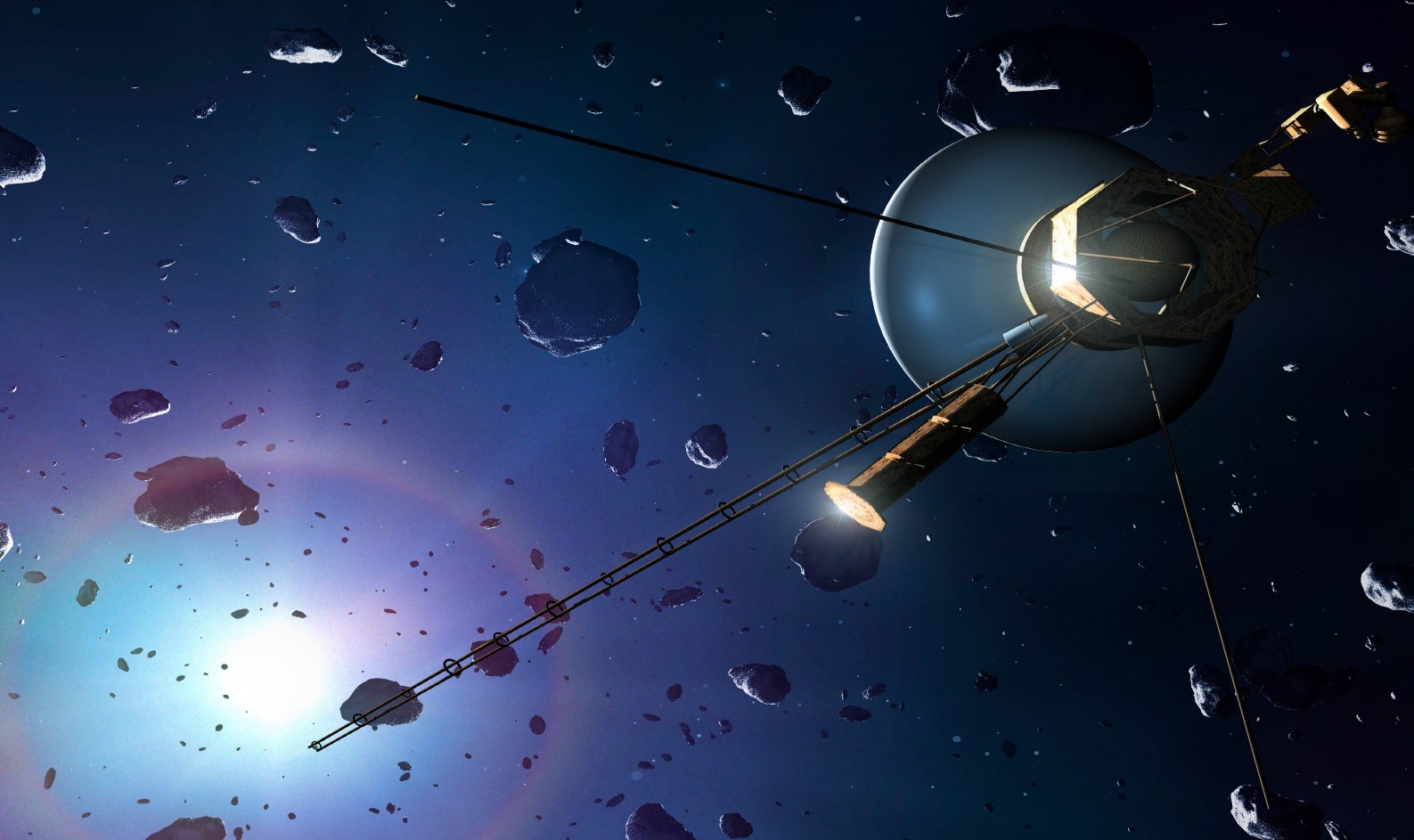
The Oort Cloud, named after the Dutch astronomer Jan Oort who first proposed its existence, is a fascinating and enigmatic part of our Universe. Located at the outer edge of our solar system, this region is home to trillions of icy bodies, including comets, that orbit around the Sun. Despite its significance in shaping our understanding of the origins and evolution of our solar system, the Oort Cloud remains relatively unknown to many. In this article, we will explore 15 surprising facts about the Oort Cloud that will leave you in awe of the vastness and complexity of our cosmic backyard. From its immense size and distance to the intriguing theories surrounding its formation, prepare to delve into a world that extends beyond our imaginations. So, let’s embark on a cosmic journey and unveil the mysteries of the Oort Cloud!
Key Takeaways:
- The Oort Cloud is a distant, icy region in our solar system, believed to be the birthplace of comets with long orbital periods, and may hold clues to the early history of the universe.
- This mysterious Oort Cloud, named after Jan Oort, could potentially influence the orbits of objects in our solar system and even have implications for the search for extraterrestrial life.
The Oort Cloud is a vast and mysterious region in our solar system.
Located thousands of astronomical units away from the Sun, the Oort Cloud is believed to be a spherical shell of icy bodies surrounding our solar system.
It is named after the Dutch astronomer Jan Oort.
Jan Oort, a renowned astronomer, first proposed the existence of the Oort Cloud in 1950 as a source of long-period comets.
The Oort Cloud is thought to be the birthplace of comets.
This distant region is believed to contain billions of icy bodies, including comets, which are thought to have originated from the Oort Cloud.
It extends far beyond the orbit of Pluto.
The Oort Cloud is estimated to extend between 2,000 and 200,000 astronomical units from the Sun, making it one of the farthest regions in our solar system.
The Oort Cloud is mostly made up of small icy objects.
These objects, often called Oort Cloud objects or OCOs, are composed of a mixture of water ice, methane, ammonia, and other volatile compounds.
The Oort Cloud is believed to be the source of long-period comets.
When perturbed by gravitational interactions with passing stars or the galactic tide, some Oort Cloud objects are sent on long and eccentric orbits, becoming comets that can be observed from Earth.
Objects in the Oort Cloud have extremely long orbital periods.
While short-period comets have orbital periods of a few years, comets originating from the Oort Cloud can have orbital periods of thousands or even millions of years.
The Oort Cloud is difficult to study directly.
Due to its immense distance from Earth, spacecraft have not yet been able to reach the Oort Cloud, making its exploration a challenge for astronomers.
The Oort Cloud is believed to be a remnant of the early solar system.
Scientists speculate that these icy bodies in the Oort Cloud have remained relatively unchanged since their formation billions of years ago, providing valuable insights into the early stages of our solar system.
The existence of the Oort Cloud has not been directly confirmed.
While scientific evidence strongly suggests the presence of the Oort Cloud, its exact composition and characteristics are still under investigation.
The Oort Cloud is thought to be a source of potential impact events on Earth.
If a large object from the Oort Cloud were to be perturbed into a collision course with Earth, it could have devastating consequences.
The Oort Cloud may contain dwarf planets.
Some scientists believe that the Oort Cloud could be home to undiscovered dwarf planets, similar to Pluto and Eris, which are located in the Kuiper Belt.
The Oort Cloud is believed to be a reservoir of pristine, ancient material.
Given its distance from the Sun, the Oort Cloud is thought to preserve the original building blocks of our solar system, providing a window into the early history of the universe.
The Oort Cloud may influence the orbits of distant objects in our solar system.
The gravitational influence of the Oort Cloud is believed to play a role in shaping the orbits of certain objects in the Kuiper Belt and beyond.
The Oort Cloud may have implications for the search for extraterrestrial life.
If a comet originating from the Oort Cloud were to collide with a habitable planet, it could potentially deliver organic molecules and water, which are essential for the development of life as we know it.
Conclusion
In conclusion, the Oort Cloud is a fascinating and mysterious region of our solar system. Its existence was theorized by Jan Oort in 1950, and since then, astronomers have been working to understand its characteristics and significance. The Oort Cloud is believed to be a reservoir of comets and icy bodies that extends far beyond the orbit of Pluto.Studying the Oort Cloud provides valuable insights into the formation and evolution of our solar system. It offers a glimpse into the early stages of planetary development and can help scientists better understand the processes that shaped our own Earth.Although many aspects of the Oort Cloud remain a mystery, ongoing research and advancements in technology continue to shed light on this enigmatic region. As our understanding grows, we may uncover even more surprising facts about the Oort Cloud and its role in the grand tapestry of the universe.
FAQs
1. What is the Oort Cloud?
The Oort Cloud is a hypothetical region located at the outer edges of the solar system, beyond the orbit of Neptune. It is believed to be a vast collection of icy bodies, including comets, that have been gravitationally captured by the Sun’s massive gravitational pull.
2. How far is the Oort Cloud from Earth?
The Oort Cloud is estimated to be located between 2,000 and 200,000 astronomical units (AU) from the Sun. For reference, 1 AU is the average distance between Earth and the Sun, which is about 93 million miles or 150 million kilometers.
3. Can we observe the Oort Cloud?
Due to its vast distance from Earth and the lack of direct observational evidence, the Oort Cloud cannot be observed directly. However, its existence is inferred through the study of long-period comets that originate from the outer regions of the solar system.
4. What is the significance of the Oort Cloud?
The Oort Cloud is believed to be a remnant of the early solar system, containing pristine material that has remained relatively unchanged since the formation of the planets. Studying the Oort Cloud can provide valuable insights into the origin and evolution of our solar system.
5. Are there any missions planned to explore the Oort Cloud?
As of now, there are no specific missions planned to explore the Oort Cloud directly. However, future space missions, such as those focused on interstellar travel, may pass through the Oort Cloud and provide valuable data about its composition and structure.
Embark on a cosmic journey beyond the Oort Cloud! Uncover mind-boggling astronomy facts that will leave you awestruck. Explore our fascinating solar system and its many wonders. Discover the secrets of celestial objects like Antares, a red supergiant star that dwarfs our Sun. From the vast expanse of space to the intricacies of heavenly bodies, there's always more to learn about the universe we inhabit. So, let your curiosity guide you as you delve deeper into the mysteries of the cosmos!
Was this page helpful?
Our commitment to delivering trustworthy and engaging content is at the heart of what we do. Each fact on our site is contributed by real users like you, bringing a wealth of diverse insights and information. To ensure the highest standards of accuracy and reliability, our dedicated editors meticulously review each submission. This process guarantees that the facts we share are not only fascinating but also credible. Trust in our commitment to quality and authenticity as you explore and learn with us.


